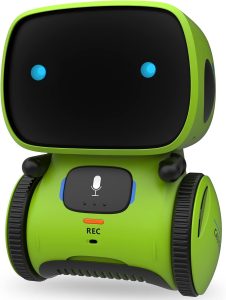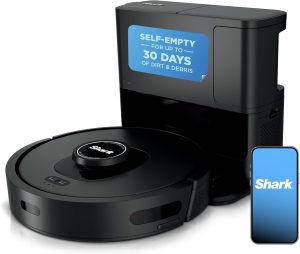AI Chatbot Implementation: A Step-by-Step Guide

The advent of artificial intelligence has revolutionized the way businesses interact with their customers. Among the myriad applications of AI, chatbots stand out as one of the most impactful tools for enhancing customer engagement and operational efficiency. **AI chatbot implementation** is no longer a futuristic concept but a present-day necessity for companies seeking to stay competitive.
AI chatbots can automate customer service, provide personalized recommendations, and even assist in complex decision-making processes. Whether you are a marketer or a marketing agency owner, understanding the intricacies of implementing AI chatbots can significantly elevate your business capabilities. This guide aims to take you through a step-by-step process of AI chatbot implementation, ensuring you have the knowledge and tools to build powerful and effective chatbots.
Before diving into the technicalities, it’s important to grasp the basics of what AI chatbots are and how they function. Essentially, AI chatbots are software programs designed to simulate human conversation using natural language processing (NLP) and machine learning algorithms. They can understand, process, and respond to user queries in real-time, providing a seamless and interactive experience.
Are you ready to revolutionize your customer interactions? Learn AI Chatbot Course and embark on your journey to mastering AI chatbot implementation today!
Understanding the Basics of AI Chatbots

Before diving into the complexities of AI chatbot implementation, it is crucial to understand the fundamental concepts that underpin these intelligent systems. **AI chatbots** are essentially software applications that use artificial intelligence to conduct conversations with users. These bots can be deployed across various platforms such as websites, messaging apps, and social media channels, making them versatile tools for enhancing customer service and engagement.
At the core of AI chatbots are technologies like **Natural Language Processing (NLP)** and **Machine Learning (ML)**. NLP allows chatbots to understand and interpret human language in a way that is both meaningful and contextually relevant. This involves breaking down sentences into components, identifying key phrases, and understanding the intent behind the user’s query. On the other hand, ML enables chatbots to learn from past interactions, improving their responses over time through algorithms and data analysis.
There are generally two types of AI chatbots: **rule-based** and **self-learning**. Rule-based chatbots follow predefined pathways to respond to specific queries, making them straightforward but limited in scope. Self-learning chatbots, however, leverage machine learning to adapt and evolve, offering more nuanced and accurate interactions. The choice between these depends on the complexity of the tasks you want the bot to handle.
Understanding these basics sets the foundation for implementing a successful AI chatbot. With this knowledge, you can better appreciate the advanced features and functionalities that will be covered in the subsequent sections of this guide.
Planning Your AI Chatbot Project
Once you have a firm grasp of the fundamentals, the next step in **AI chatbot implementation** is meticulous planning. A well-thought-out plan ensures that your chatbot not only meets but exceeds your business objectives. Start by defining the **goals** you want to achieve. Are you looking to enhance customer service, streamline operations, or generate leads? Clear goals will guide the development process and help measure success.
Next, identify your **target audience**. Understanding who will interact with your chatbot will influence its design, language, and functionality. For instance, a chatbot aimed at tech-savvy users will differ significantly from one designed for a general audience. Create user personas to better visualize and cater to their needs.
It’s also essential to outline the key **features and functionalities** your chatbot will offer. Will it handle basic inquiries, or will it be equipped to perform complex tasks like processing transactions or providing personalized recommendations? List down all the desired features and prioritize them based on their importance and feasibility.
Choosing the right **platform** for your chatbot is another critical decision. Whether it’s a website, mobile app, or social media platform, the choice should align with where your target audience is most active. Additionally, consider the **technology stack** you’ll use, including chatbot frameworks, NLP engines, and integration tools. Popular choices include Dialogflow, Microsoft Bot Framework, and IBM Watson.
Finally, establish a **timeline** and **budget** for your project. Break down the development process into phases, such as design, development, testing, and deployment, and allocate resources accordingly. Having a clear timeline and budget helps in keeping the project on track and ensures timely delivery.
By investing time in thorough planning, you lay a strong foundation for the successful implementation of your AI chatbot, ensuring it delivers real value to your business and users alike.
Choosing the Right AI Tools and Platforms

Choosing the right tools and platforms is a pivotal step in **AI chatbot implementation**. The tools you select will significantly impact the capabilities, performance, and scalability of your chatbot. Start by evaluating the **Natural Language Processing (NLP)** engines available. Popular choices include Google Dialogflow, Microsoft Bot Framework, and IBM Watson. These platforms offer robust NLP capabilities, enabling your chatbot to understand and respond to user queries effectively.
Next, consider the **development frameworks**. Frameworks like Rasa, Botpress, and Wit.ai provide comprehensive environments for building, training, and deploying chatbots. Each framework has its unique strengths. For instance, Rasa is known for its flexibility and open-source nature, while Botpress offers a user-friendly interface and extensive customization options.
Integration capabilities are another crucial factor. Your chatbot will need to interact with various systems like CRM, ERP, and social media platforms. Ensure that the tools and platforms you choose support seamless **integration** with these systems. APIs and webhooks are commonly used methods for achieving this connectivity.
Don’t overlook the importance of **scalability**. As your business grows, your chatbot should be able to handle increased traffic and more complex interactions. Cloud-based solutions like AWS Lex and Azure Bot Service offer scalable infrastructure that can grow with your needs, providing high availability and reliability.
Additionally, consider the **cost** associated with each tool and platform. While some solutions offer free tiers, advanced features and increased usage often come at a price. Make sure to evaluate the long-term costs and choose a solution that fits within your budget.
Finally, assess the **support and community** around the tools and platforms. A strong community can be invaluable for troubleshooting issues, sharing best practices, and getting updates on new features. Platforms with active forums, extensive documentation, and responsive support teams can significantly ease the development process.
By carefully choosing the right AI tools and platforms, you set the stage for a successful chatbot implementation that can deliver exceptional user experiences and meet your business objectives.
Developing and Training Your AI Chatbot

Once you’ve chosen the right tools and platforms, the next step in **AI chatbot implementation** is development and training. This phase involves creating the actual chatbot and teaching it to understand and respond to user inputs accurately.
Begin by defining the **user intents** and **entities** your chatbot will handle. Intents represent the various tasks or questions users might have, such as booking an appointment or checking a balance. Entities are the pieces of information needed to fulfill these intents, such as dates, names, or amounts. Clearly defined intents and entities form the foundation for effective Natural Language Processing (NLP).
Next, create **dialogue flows** and **conversation scripts**. Dialogue flows map out the paths a conversation can take, while scripts provide the specific responses the chatbot will give. Use flowcharts or specialized tools like Botmock to visualize and design these interactions. Make sure to account for various user inputs and scenarios, including potential errors or misunderstandings.
With your dialogue flows in place, it’s time to **train the chatbot**. This involves feeding it with a variety of training data, including sample questions and answers. The more diverse and comprehensive your training data, the better your chatbot will perform. Utilize the training features of your chosen platform to iteratively input data, test responses, and refine the chatbot’s understanding.
Leverage **machine learning algorithms** to enhance the chatbot’s capabilities. Platforms like Rasa and Dialogflow offer built-in machine learning models that can learn from user interactions over time, improving the chatbot’s accuracy and relevance. Regularly update and retrain the chatbot based on new data and user feedback to keep it performing at its best.
Don’t forget to implement **fallback mechanisms** for situations where the chatbot cannot understand or handle a query. Fallback responses can guide users to rephrase their questions, provide alternative options, or escalate to human support if necessary. This ensures a smooth user experience even when the chatbot encounters challenges.
Finally, conduct extensive **testing** to ensure your chatbot performs well in real-world scenarios. Use both automated testing tools and human testers to identify and fix any issues. Testing should cover various devices, browsers, and user environments to ensure broad compatibility and reliability.
By meticulously developing and training your AI chatbot, you can create a powerful tool that effectively engages users and meets your business needs.
Deploying and Monitoring Your AI Chatbot

After successfully developing and training your AI chatbot, the final step in the **AI chatbot implementation** process is deployment and monitoring. This phase ensures that your chatbot is not only live but also continues to function optimally.
**Deployment** involves integrating your chatbot with the platforms where your audience interacts. This could be your website, mobile app, social media channels, or messaging apps like Facebook Messenger and WhatsApp. Each platform may have specific requirements and APIs for seamless integration, so it’s essential to follow their guidelines closely.
Ensure that your chatbot is well-embedded in your digital touchpoints. For example, if it’s on your website, place it in a prominent position where visitors can easily find and interact with it. Consider using chat widgets or pop-ups to make the chatbot more accessible.
Once deployed, the **monitoring** process begins. Continuous monitoring is crucial to maintain the chatbot’s performance and user satisfaction. Use analytics tools to track key metrics such as user engagement, response accuracy, and resolution rates. These insights help you understand how well your chatbot is performing and where improvements are needed.
Set up **real-time alerts** for any critical issues, such as downtime or significant drops in performance. This allows you to address problems promptly and minimize any negative impact on the user experience. Additionally, regularly review user feedback and interaction logs to identify common issues and areas for enhancement.
Regular **updates and maintenance** are vital to keeping your chatbot relevant and efficient. As your business evolves and user needs change, update the chatbot’s knowledge base, dialogue flows, and training data. Implement new features and integrations as needed to enhance its capabilities.
Incorporate **A/B testing** to experiment with different responses, conversation paths, and features. This helps you determine what works best for your audience and continuously optimize the chatbot’s performance.
By meticulously deploying and monitoring your AI chatbot, you ensure it remains a valuable tool for user engagement and business growth. If you’re ready to take the next step in mastering AI chatbots, Learn AI Chatbot Course and enhance your skills today!







